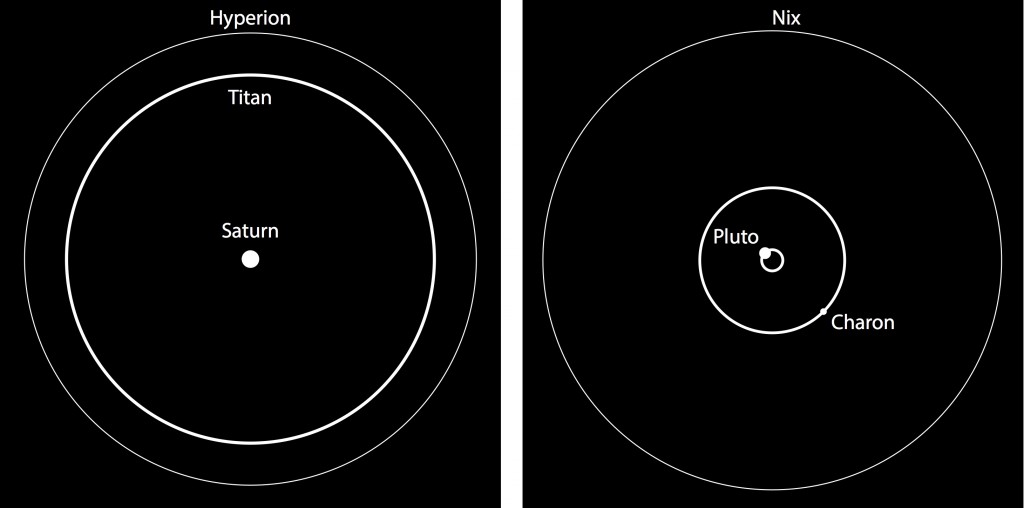The work of Newton and Laplace suggested to many that the solar system was like a giant clockwork, which was illustrated by beautiful mechanical models called orreries. The controversial Molchanov hypothesis avers that every oscillatory system evolves to a resonance governed by a family of integers, like the 3/2 resonance between the orbits of Pluto and Neptune, or the 2/1 resonance between Jupiter’s giant natural satellites Ganymede and Europa, and Europa and Io. (Europa orbits Jupiter once when Io orbits twice.) Yet my research this sabbatical suggests that the irrational golden ratio describes some variable stars. Indeed, overlapping resonances may account for evidence of chaos in the solar system.

In the Saturn system, the 3/4 orbital resonance between tiny, irregularly-shaped Hyperion and planet-sized Titan causes Hyperion to tumble chaotically in its orbit. If you lived on Hyperion, the sun would appear to rise and set at irregular times. Last week, researchers announced that something similar occurs in the Pluto-Charon binary system. Using archival Hubble space telescope data ahead of the New Horizon’s July flyby, Mark Showalter and Doug Hamilton argued that the tiny moons are in orbital resonance but light curves of Nix and Hydra are not sinusoidal, suggesting chaotic tumbling. Nix’s small size implies an irregular shape. (We should know for sure next month.) Just as the dynamic gravity of Saturn and Titan chaotically tumble irregular Hyperion, the dynamic gravity of Pluto and Charon chaotically tumble irregular Nix. If you lived on Nix, the sun might one day rise in the east and set in the north.

Thanks, Mark! I enjoy reading your posts as well.